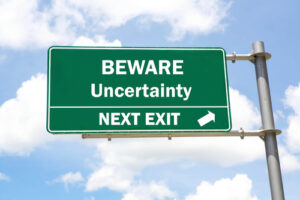Understanding Risk vs. Uncertainty: Insights from Frank Knight and Beyond
The Distinction that Matters
When discussing economics, few figures loom as large as Frank Knight, a pivotal economist and the architect of the Chicago School of Economics, famed for giving us the essential distinction between risk and uncertainty. His 1921 masterpiece, “Risk, Uncertainty, and Profit,” remains foundational for anyone looking to navigate the complex waters of economic theory.
Knight famously stated:
“Uncertainty must be taken in a sense radically distinct from the familiar notion of Risk, from which it has never been properly separated. The term ‘risk,’ as loosely used in everyday speech and in economic discussion, really covers two things which, functionally at least, in their causal relations to the phenomena of economic organization, are categorically different.”
Breaking It Down
Risk, as Knight articulated, involves situations where outcomes are unknown but probabilities can be quantified. For instance, the expected returns on a well-analyzed investment can be calculated, making it manageable for both entrepreneurs and investors. Conversely, uncertainty describes scenarios devoid of calculable probabilities, often arising when historical data is lacking or when faced with unprecedented market shifts. This crucial difference sets the stage for understanding entrepreneurial profits, as they emerge from the uncertainties that entrepreneurs are willing to navigate.
While Knight’s framework provides a solid foundation for economic thought, there is an argument that goes further: is there truly anything that is uncertain?
A Bold Assertion
As traders, we learn to dismiss the notion of uncertainty, arguing instead that past patterns reveal underlying cycles. Classical economists often overlook historical data, perceiving it as inconsistent or irrelevant. This perspective stands contrary to evidence from ancient civilizations, which tells us that while external conditions may vary, human economic behavior does not change fundamentally.
Historical Lessons
The collapse of empires, such as Rome, showcases patterns of economic change that resonate today. Just as Roman currency debasement led the empire down a perilous path, current governments struggle to manage the economic realities of their populations. A fascinating case study is how Roman coins, initially made of over 50% silver, plummeted to a mere 0.2% silver content in just eight years. This parallel can inform today’s economic landscape, revealing how quickly and profoundly instability can emerge when foundational values are compromised.
Cycle of Human Nature
Why would we claim certainty exists in what many label as uncertain? Because human behavior remains remarkably consistent. For over 6,000 years, economies have revolved around patterns of boom and bust dictated by human psychology and the cyclical nature of market dynamics.
Political dynamics obey similar laws: shift the economic landscape dramatically, and political ideologies will inevitably shift to adapt. Whether a government is pro- or anti-EU, reality dictates that economic forces will compel reactions that often echo historical occurrences.
Rediscovering Economic Truths
Like former Fed Chairman Paul Volcker, who evaluated the business cycle and found patterns contrary to classical economic theory, modern investors have the opportunity to harness these insights. My discussions with Volcker about the Economic Confidence Model illustrate a crucial point: the business cycle tends to unfold over approximately eight years. Recognizing and understanding these cycles could empower contemporary entrepreneurs and investors to make more informed decisions.
Conclusion: Harnessing Historical Wisdom
At Extreme Investor Network, we strongly believe that understanding the nuanced relationship between risk and uncertainty can offer a competitive edge for investors. The truth of economics is an evergreen struggle dictated by human nature and historical patterns.
While common economic theory labels certain events as uncertain, a deeper dive reveals repeating cycles that can guide intelligent decision-making. Resources like these empower savvy investors to not just react to panic but to anticipate and act, leveraging centuries of economic wisdom.
In summary, nothing is truly uncertain; rather, it’s all about recognizing patterns, learning from history, and responding thoughtfully to the market dynamics at play. Embrace this perspective, and you’ll find yourself ahead of the curve, not just an observer of the economic chaos.

